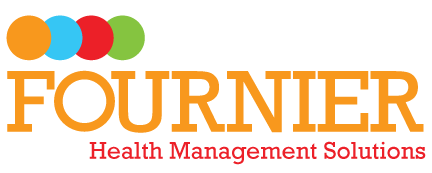This is a guest post by Helen, Fournier Health Tobacco Cessation Facilitator
According to the Canadian Cancer Society and The Conference Board of Canada, employees who smoke cost organizations $3,396 in missed work time, decreased productivity, higher insurance rates, and increased maintenance costs.
No one can smoke inside, so what’s the problem?

- Whether done inside or outside, smoking negatively impacts the health of the smokers, leading to more respiratory illnesses such as coughs, colds, and chest congestion.
- For a worker with asthma or other breathing problems, third-hand smoke brought inside by a smoker returning from a break could trigger their symptoms and affect their productivity and absenteeism levels.
Third-hand smoke is a phenomenon where the toxins from cigarette smoke can off-gas from smokers’ clothing when they return from cigarette breaks. A 2010 study published in the Proceedings of the National Academy of Sciences of the United States shows that exposure to third-hand smoke has serious health hazards, including the formation of carcinogens.
You can learn more about third-hand smoke in this video by the University of California researchers at California’s Thirdhand Smoke Consortium. While they refer mostly to the locations where people have smoked, they do also refer to the smoke that lingers on smokers’ clothing and skin.
[youtube]http://www.youtube.com/watch?v=G2vlk_b6UyE[/youtube]
How can employers and managers help employees quit smoking and stay quit?
Helping employees quit smoking will create healthier, happier employees with less absenteeism and increased production, and it also promotes wellness in the workplace.
Here are five steps to get you started:
- Bring in a smoking cessation expert for a lunch and learn to talk about the benefits of quitting and provide some tips.
- Offer a reward for employees to quit smoking. (Reward non-smokers for making other healthy changes.)
- Start a peer support group led by a professional facilitator.
- Acknowledge successful participants at a luncheon or other event, and celebrate having a healthier workplace for everyone.
- Encourage employees to access the Smokers’ Helpline.
Aside from the Smokers’ Helpline, the Canadian Cancer Society also presents an annual challenge where successful quitters can win prizes – including a new car! Driven to Quit is coming up soon in March 2014 – start planning now for a successful campaign in your workplace! Free tools and more information are available at http://driventoquit.ca.
Helen is a Certified Physician Assistant (PA) with over 30 years in healthcare and 19 of those as a PA, mostly in the Canadian Forces. For more information about Fournier Health and our tobacco cessation programs, please contact us today.





Leave A Comment